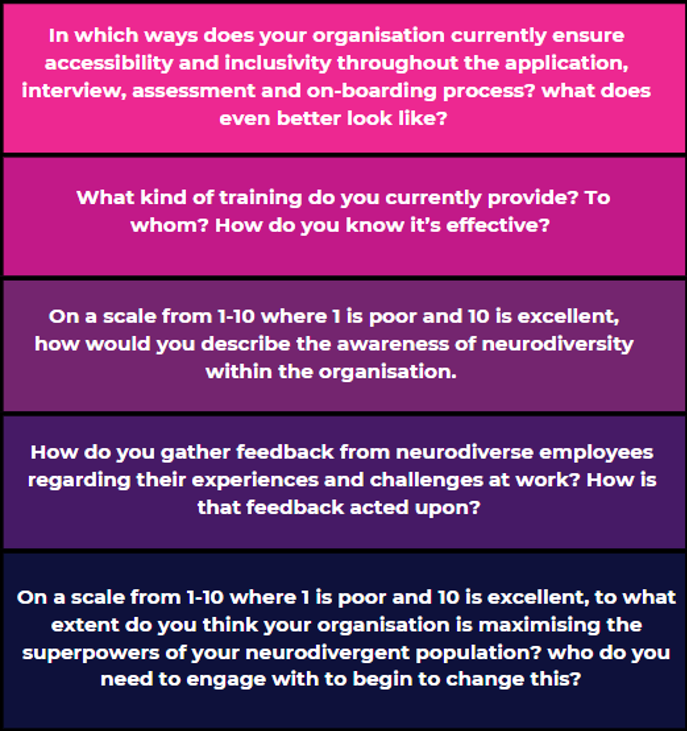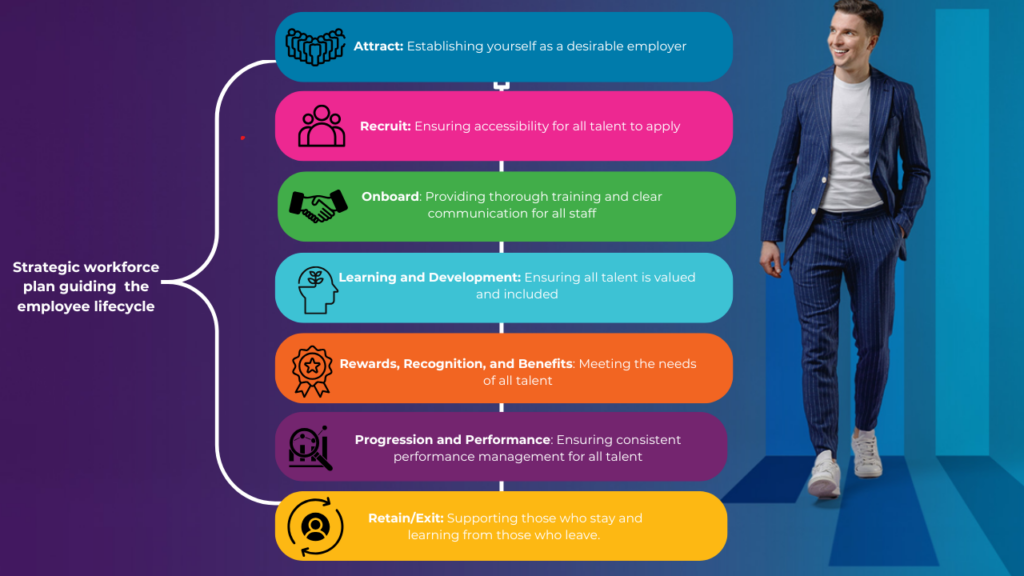Neurodiversity – Are You Genuinely Being Inclusive or Just Going Through a Tick-Box Exercise?
According to HR Future, companies that truly embrace neurodiversity report a whopping 90% increase in employee retention, and teams that include and embrace neurodivergent colleagues are 30% more productive! If these statistics are even close to accurate, they offer a pretty compelling reason for all of us to get our heads around what it really means to embrace neurodiversity.
Let’s unpick this
Neurodiversity refers to the natural, virtually infinite variations in the human brain. Every human has a unique nervous system and combination of abilities and needs, but those considered to be neurodiverse—autistic, ADHD, ADD, Aspergers, Dyslexia, Dyspraxia, 2e, HSP to name the most common—tend to bring something even more extreme in terms of perspective, skill, creativity, or drive.
Roughly 15% of the adult population in the UK is considered to be neurodiverse. That’s 1 in 7 of us, many of whom will be masking the challenges they experience for fear of standing out and seeming weak or weird. But!! An unintended negative consequence of this masking is probably a dampening down of the superpower!
Neurodivergent Super Powers
Truly embracing inclusivity starts with deepening understanding around neurodiversity, both in terms of the superpowers that lie within the names, and the unique challenges these people face. Here is our starter for 10:
-
Autism: Incredible attention to detail, deep focus, pattern recognition, exceptional memory and problem-solving skills. Think Elon Musk and Bill Gates
-
ADHD: High energy, creativity, hyper-focus on topics that interest, strong problem-solving under pressure, the ability to thrive under pressure & at pace. Think Richard Branson
-
Dyslexia: Very strong spatial reasoning & big picture thinking, brilliant problem-solving and creative skills. Think Ingvar Kamprad (founder of IKEA)
-
Dyspraxia: Very strong strategic thinking and creative problem-solving skills, out-of-the-box, people-centred skills requiring depth of empathy. Think Daniel Radcliffe
-
2e (Twice Exceptional): Exceptional intellectual abilities such as advanced problem-solving or creativity. Think Albert Einstein
-
HSP (Highly Sensitive Person): Deep empathy, they notice things others don’t, strong intuition, deep processing leading to innovative ideas, highly conscientious. Think Jacinda Ardern
Are you creating a super-powered environment?
Imagine that your company culture is the garden & your leaders are the gardeners. Your people are your plants; all plants require attention, but some require very specific topography—this is your neurodivergent population.
But here’s the key question: Are you cultivating an environment that truly enables neurodiverse talent to flourish, or are you simply ticking boxes?
-
A tick-box approach: Adding ‘we welcome neurodiverse applicants’ to job ads but keeping the same rigid hiring processes. Running a one-off awareness workshop but failing to adapt systems or leadership styles.
-
True inclusivity: Reassessing job descriptions, adjusting interview methods to accommodate different thinking styles, providing ongoing support, and valuing the unique strengths neurodivergent employees bring.
To shift from a tick-box to a transformational culture, it’s imperative to examine the entire employee lifecycle – from recruitment to retention – and challenge processes, systems, mindsets, and behaviours.
At Full Potential, we are all about getting underneath the surface in order to create transformational change – in people, in leadership, in systems.
How is your organisation currently doing?
Moving from Awareness to Action
The future is exciting!
Imagine your workplace teeming with diversity – adults who were historically sidelined or underutilised now being valued for their extreme skills, aptitudes, creativity, sensitivity, focus, and drive. A workplace where neurodiversity isn’t just acknowledged but actively harnessed as a competitive advantage.
So here’s your challenge: What’s one step your organisation can take this month to truly embrace neurodiversity? Whether it’s adapting your hiring process, investing in tailored training, or simply having a conversation – real change starts with action.
It’s time to move beyond rhetoric and make neurodiversity a true asset to your business.








